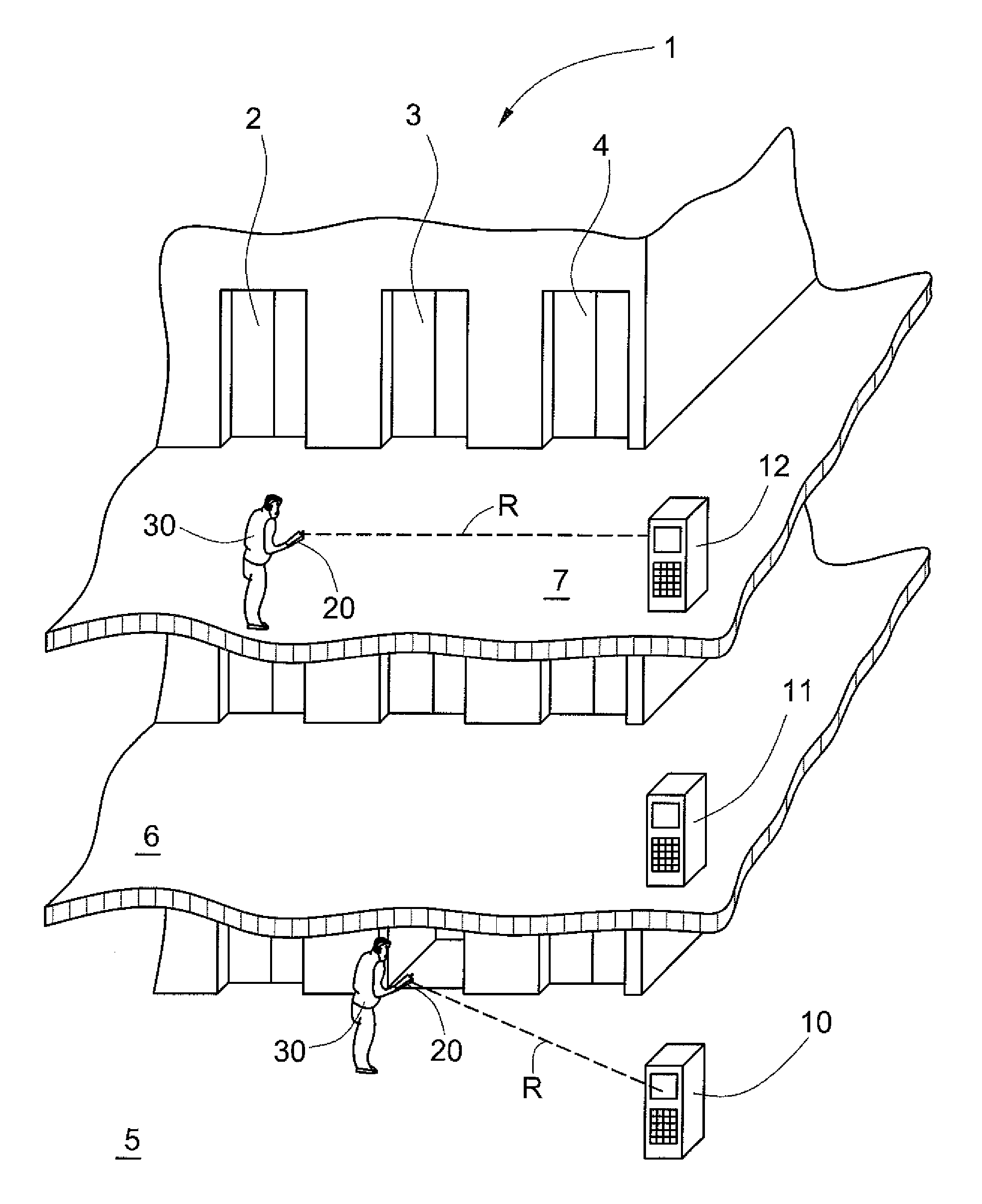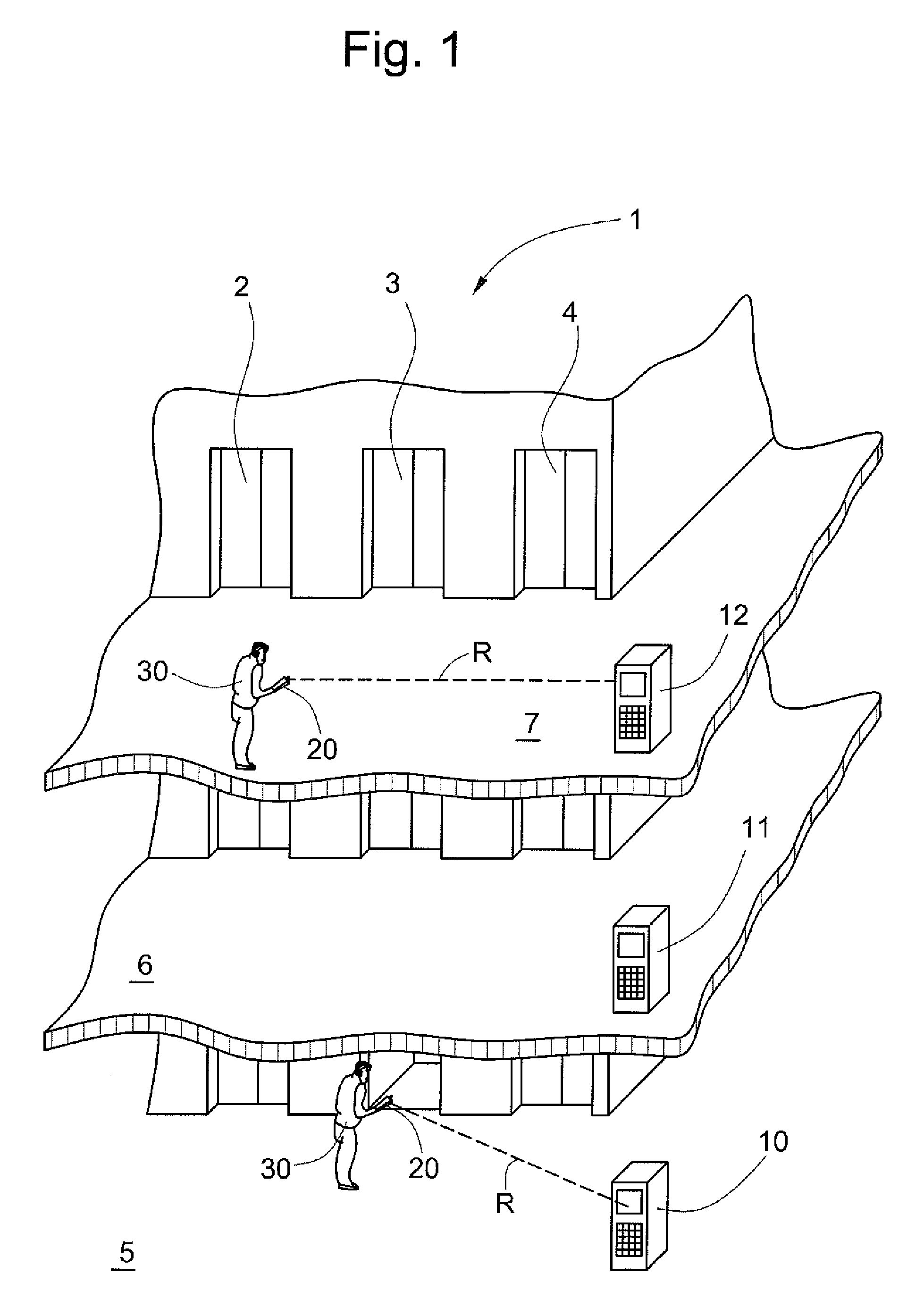Method of Guiding a User in an Environment, Particularly in a Building
a technology of environment and user, applied in the direction of electrical equipment, radio transmission, elevators, etc., can solve the problems of difficult localization of users, user does indeed obtain many data, and cannot control which information he or sh
- Summary
- Abstract
- Description
- Claims
- Application Information
AI Technical Summary
Benefits of technology
Problems solved by technology
Method used
Image
Examples
Embodiment Construction
[0023]FIG. 1 schematically shows a system for guiding a user 30 in a building. The building includes an elevator installation 1 with a first elevator 2, a second elevator 3 and a third elevator 4. The illustrated detail of the building shows, in the manner of a detail, a first floor 5 (underground car park), a second floor 6 (ground floor) and a third floor 7 (first floor), wherein in each floor 5, 6, 7 a respective door leads to one of the elevators 2, 3, 4. In addition, on each of the floors 5, 6, 7 a respective first communications unit in the form of a stationary terminal 10, 11, 12 is provided in the region of the elevator installation 1. The terminals 10, 11, 12 are each equipped with a control panel and a display and are connected by way of a data line with a central computer unit and a destination call control of the elevator installation.
[0024] A method for guidance of the user 30 in the building is explained in the following on the basis of this system. After the user 30 ...
PUM
 Login to View More
Login to View More Abstract
Description
Claims
Application Information
 Login to View More
Login to View More - R&D
- Intellectual Property
- Life Sciences
- Materials
- Tech Scout
- Unparalleled Data Quality
- Higher Quality Content
- 60% Fewer Hallucinations
Browse by: Latest US Patents, China's latest patents, Technical Efficacy Thesaurus, Application Domain, Technology Topic, Popular Technical Reports.
© 2025 PatSnap. All rights reserved.Legal|Privacy policy|Modern Slavery Act Transparency Statement|Sitemap|About US| Contact US: help@patsnap.com


